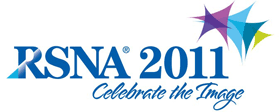
Abstract Archives of the RSNA, 2011
LL-VIS-TU6B
Angiographic and Pathological Comparison of Hydrogel-coated Coils and Fibered Coils in a Sheep Model: Short-term Results
Scientific Informal (Poster) Presentations
Presented on November 29, 2011
Presented as part of LL-VIS-TU: Vascular/Interventional
Audrey Fohlen, Presenter: Nothing to Disclose
Julien Namur PhD, Abstract Co-Author: Nothing to Disclose
Michel Wassef, Abstract Co-Author: Nothing to Disclose
Homayra Ghegediban, Abstract Co-Author: Nothing to Disclose
Alexandre Pierre Laurent MD, PhD, Abstract Co-Author: Nothing to Disclose
Jean-Pierre Jacques Pelage MD, PhD, Abstract Co-Author: Research grant, BioSphere Medical, Inc
Consultant, BioSphere Medical, Inc
Research grant, Biocompatibles International plc
Research grant, Merit Medical Systems, Inc
Consultant, Merit Medical Systems, Inc
Research grant, Cook Group Incorporated
Consultant, Cook Group Incorporated
Research grant, Keocyt
Medical Board, Keocyt
Research grant, Terumo Corporation
Consultant, Terumo Corporation
To compare the angiographic effects (number of coils and time to occlusion) of hydrogel-coated coils and fibered coils in two arterial territories.
To compare the angiographic appearance with hydrocoils and fibered coils at 24 hours and 7 days.
To compare the pathological appearance with hydrocoils and fibered coils at 24 hours and 7 days in terms of mechanism of occlusion and inflammatory response.
Six sheep had both internal iliac and renal arteries randomly embolized using fibered coils or hydrocoils. Both renal arteries were embolized using detachable 0.018 coils and both internal iliac using pushable 0.035 coils. The number of coils and time to occlusion were recorded. Three animals were sacrificed after 24 hours and 3 after 7 days. Control angiography was obtained before sacrifice to assess recanalization. Tissue samples were embedded in resin or polymethylmetacrylate, sectioned and stained with methylene and toluidine blue. Pathological evaluation consisted in characterizing the mechanism of occlusion: percentage of the lumen occluded by the embolic and thrombus, presence and type of inflammatory cells and presence of recanalization.
No difference was found between hydrocoils and fiberered coils for the time to occlusion. At angiography, 75% of vessels embolized with 0.035 hydrocoils were occluded (24 hours and 7 days) vs 67% of those embolized with fiberered coils (NS). Recanalization of the renal artery was observed in both groups at 24 hours and 7 days.
For fibered coils, at pathology thrombus accounted for 69% of the occlusion and the embolic represented 31%. For hydrocoils, the surface of thrombus was 42% and the embolic represented 58%. The percentage of thrombus was significantly lower for hydrocoils than for fibered coils at the 2 time points. Inflammatory cells were present in the arterial wall or in the surrounding tissue at both time points. The presence of inflammatory cells was more frequent with fibered coils than with hydrocoils (71% vs 30% NS).
The percentage of thrombus was significantly less with hydrocoils as compared to fibered coils. Markedly lower inflammatory cell response was seen with hydrocoils. Both differences may translate into less long-term recanalization. Further investigation is needed.
Less thrombus and inflammation were observed with hydrogel coated coils compared with fibered coils.
Fohlen, A,
Namur, J,
Wassef, M,
Ghegediban, H,
Laurent, A,
Pelage, J,
Angiographic and Pathological Comparison of Hydrogel-coated Coils and Fibered Coils in a Sheep Model: Short-term Results. Radiological Society of North America 2011 Scientific Assembly and Annual Meeting, November 26 - December 2, 2011 ,Chicago IL.
http://archive.rsna.org/2011/11034521.html

